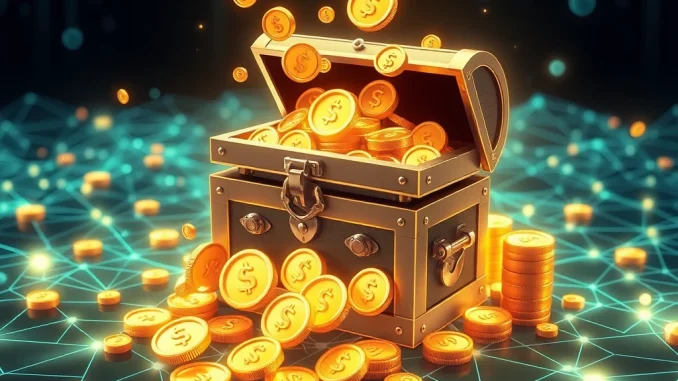
Cardano founder Charles Hoskinson has put forth a significant proposal that could reshape the landscape of the network’s decentralized finance (DeFi) ecosystem. The core idea? Deploying a substantial portion of the Cardano Treasury to inject much-needed Crypto Liquidity into DeFi protocols built on Cardano.
What is the Cardano Treasury Proposal?
At its heart, the proposal from Charles Hoskinson involves converting a considerable sum – specifically, $100 million – from the existing Cardano treasury reserves. This conversion would be into USDM stablecoins, a stablecoin designed to operate within the Cardano ecosystem. The primary objective is to strategically deploy these USDM stablecoins into various Cardano DeFi applications and protocols.
This isn’t just about moving funds; it’s a calculated effort to:
- Increase the total value locked (TVL) within Cardano DeFi.
- Provide deeper liquidity for trading pairs and lending protocols.
- Make the Cardano DeFi ecosystem more attractive and functional for users and developers.
Boosting Cardano DeFi Liquidity: How It Works
Injecting $100 million in stablecoin liquidity directly addresses one of the key challenges for nascent DeFi ecosystems: insufficient capital. By providing a large, stable base of USDM, protocols can offer better trading execution, more competitive lending and borrowing rates, and overall smoother user experiences. This influx of Crypto Liquidity acts like the lifeblood for financial applications, enabling larger transactions and reducing volatility caused by thin order books.
The choice of USDM is deliberate, aiming to keep the value within the Cardano ecosystem while providing the stability required for financial operations, unlike volatile cryptocurrencies.
Expected Returns and Potential ADA Price Impact
Hoskinson’s proposal isn’t purely about subsidy; it’s framed as an investment. He anticipates that deploying the funds within DeFi protocols could generate annual returns ranging from 5% to 10%. This return mechanism is crucial because the generated profits would not simply sit idle. The plan is to recycle these returns specifically to buy back ADA Price on the open market. This buyback mechanism serves a dual purpose:
- It provides sustained buying pressure for ADA.
- By buying ADA from the market and potentially holding or staking it, it could effectively reduce the circulating supply over time, which is typically considered a positive factor for asset value.
This strategic recycling links the success of the Cardano DeFi ecosystem directly to the health and potential appreciation of the native ADA token.
Attracting Venture Capital and Broader Interest
A significant injection of capital and resulting growth in the Cardano DeFi space could also have a ripple effect on external investment. Reports suggest that such a move could capture the attention of major venture capital firms known for their crypto investments, like a16z and Pantera Capital. Increased activity, higher TVL, and a more robust ecosystem make Cardano a more attractive destination for institutional and venture funding. This external validation and investment could further accelerate development and adoption within the Cardano network, bringing more Crypto Liquidity and innovation.
Potential Benefits and Considerations
The proposal offers several potential benefits:
- **Enhanced DeFi Functionality:** Deeper liquidity improves trading, lending, and borrowing.
- **Ecosystem Growth:** Attracts developers and users to build and participate in Cardano DeFi.
- **ADA Support:** Buybacks from returns could positively impact the ADA Price.
- **External Investment:** Signals maturity and potential, drawing VC interest.
- **Treasury Utilization:** Puts a portion of the community-controlled treasury to active, productive use.
However, executing such a proposal requires careful consideration of the specific DeFi protocols used, risk management strategies for the deployed funds, and clear governance mechanisms for how the returns are managed and used for ADA buybacks. The implementation details will be key to the success of this ambitious plan for the Cardano Treasury.
Conclusion: A Bold Step for Cardano DeFi
Charles Hoskinson’s proposal to allocate $100 million from the Cardano Treasury to boost Cardano DeFi liquidity using USDM is a bold and strategic move. By aiming to generate returns for ADA buybacks and attract external investment, the plan seeks to create a virtuous cycle of growth for the ecosystem. If successfully implemented, this could significantly enhance the utility and attractiveness of Cardano as a platform for decentralized finance, potentially impacting the ADA Price and solidifying its position in the competitive crypto landscape.



